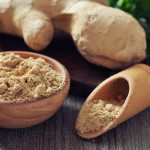So what is medieval gingerbread? When it comes to 12th century European history, people do not generally think of gingerbread as a food option but it often was, at least for the rich.
Medieval spices were expensive in 11th century Europe because they had to be imported from Asia or Africa. So, only wealthy households could afford to enjoy them. Medieval food could be quite bland, so cooks in the kitchens of the wealthy used honey and spices whenever they could to add extra flavour. A sweet treat with a spicy taste was very much a medieval luxury! You can just imagine a medieval castle Great Hall where the noble lord’s family had dinner – the children most probably looked forward the most to when the sweet treats were served, especially gingerbread. This type of scene was, of course, in stark contrast to the reality of the lives of everyday families for whom food made with spices was never a menu option.
Origins Of Ginger & Gingerbread
Ginger has been used in recipes for centuries and originated in Asia. Exactly how it found its way to Western Europe is not entirely clear but many believe medieval knights discovered it in the Eastern Mediterranean about 1,000 years ago who brought it back to Europe with them when they returned.
There are plenty of European historical references to medieval gingerbread and these help shed light on its popularity. For example:
Gingerbread was a feature of many medieval fairs and festivals where it was baked into special shapes (animals, flowers, etc) and decorated. In medieval England and France there gingerbread fairs became popular and these were hosted on a regular basis, many continuing for centuries.
Actual recipes used in the making of medieval gingerbread appear in the 14th and 15th centuries, although the type of gingerbread they made was much sweeter and more like candy and quite unlike what we are used to eating today. The first collection of recipes in English that refers to the use of spices such as ginger is The Forme of Cury. Chaucer’s Canterbury Tales makes reference to the definitive type of medieval sweet gingerbread, at that time called “gyngebreed” ….
“They fette hym first the sweete wyn, and mede eek in a mazelyn, and roial spicerye of gyngebreed that was ful fyn, and lycorys, and eek comyn, with sugre that is trye.”
Gingerbread Around The World
The list of countries where people enjoy gingerbread is a long one and Wikipedia goes into this in some detail. The countries include England, United States, Netherlands, Germany, Belgium, Switzerland, Poland, Russia, the Nordic countries and even Panama.
A Medieval Gingerbread Recipe
This is an easy gingerbread recipe which will delight all the family. It is probably the combination of cloves and pepper alongside the ginger that make this so sweet bread so unusual yet appetizing.
NOTE: In this recipe you have to boil the honey and in medieval times this process was called clarifying. When we say ‘clarify’ today we tend to mean something quite different! You might want to read our medieval glossary for more fascinating culinary terms from 12th century England.
- 4 teaspoons ground ginger
- 1 teaspoon ground cloves
- 1 teaspoon pepper
- 2 cups clear honey
- 1 lb breadcrumbs
- Gently heat the honey in a pan and bring to the boil. A scum will appear on the top of the honey as it boils so skim this off.
- Stir the breadcrumbs into the hot honey and remove the pan from the heat.
- Mix the spices into the honey/breadcrumb mixture and transfer to a baking tray. You need the mixture to be about 1/2 inch deep in the tray when it settles. Leave to cool.
- When cold, cut into squares or triangles to serve.
Gingerbread recipe by Shelagh Caudle

